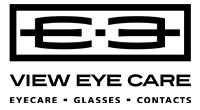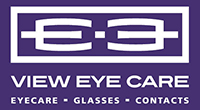We all know that staying on top of our physical health is crucial, but it’s easy to overlook our eyes in the mix. For many, healthy vision is something we take for granted—until discomfort or blurriness catches us off guard. Our eyes play an essential role in our day-to-day lives, and taking steps to maintain good eye health is key to keeping everything in focus.
One common issue impacting millions of Canadians is dry eyes. This condition doesn’t just cause discomfort; it can also blur your vision. Understanding what dry eyes are and how they affect your sight can be a game-changer in protecting your eye health.
What Exactly is Dry Eye Disease?
Dry eye disease is a common condition that affects people of all ages. It typically falls into two categories:
- Evaporative dry eyes: When your tears evaporate too quickly because of low-quality tears.
- Aqueous deficiency dry eyes: When your body doesn’t produce enough tears to keep your eyes hydrated.
Interestingly, evaporative dry eye is by far the most common type, responsible for 9 out of 10 cases. Both conditions impact your tear film—a thin layer of tears that keeps your eyes comfortable and protected. Without this film, your eyes can feel irritated, gritty, and even look red.
What Are the Risk Factors?
Dry eyes can happen to anyone, but there are a few common factors that make it more likely:
- Age: Those over 65 are more likely to experience dry eyes.
- Sex: Women are at a higher risk, partly due to hormonal changes.
- Medications: Certain drugs, like antihistamines and decongestants, can dry out your eyes.
- Environment: Hot, dry, or windy weather can cause your tears to evaporate quickly.
- Autoimmune Disorders: Conditions like Sjögren’s syndrome and rheumatoid arthritis often include dry eye symptoms.
- Digital Screen Time: Staring at screens reduces our blink rate, causing the tear film to evaporate faster.
Why Should You Be Concerned?
Dry eyes might seem like a minor nuisance, but untreated, they can become more serious. Your tear film acts as a barrier, protecting your eyes from bacteria and particles that could lead to infections or even damage your cornea. The good news? There are many strategies to manage dry eye symptoms effectively.
If you’re noticing blurriness along with dry eyes, it’s a good idea to visit your eye doctor. Persistent blurriness could indicate a more serious condition, and an optometrist can help determine the root cause.
Why Do Dry Eyes Lead to Blurry Vision?
Interestingly, dry eyes themselves aren’t always the direct cause of blurred vision. Sometimes, both dry eyes and blurriness are symptoms of another underlying issue. If treating your dry eyes doesn’t resolve the blurriness, it might be time to inform your optometrist and explore further.
Watery Eyes: A Surprising Symptom
Dry eye disease doesn’t always mean your eyes will feel dry. In fact, some people experience excessive watering as a symptom. This reaction happens when your eyes try to compensate for dryness by producing more tears. Unfortunately, these tears often evaporate quickly, starting a frustrating cycle of dryness and watering.
Digital Eye Strain and Dryness
Digital eye strain, also known as computer vision syndrome, is increasingly common as we spend more time on screens. When we focus on a screen, we blink less, which can lead to dry eyes. A simple way to counteract this is the 20-20-20 rule: every 20 minutes, look at something 20 feet away for 20 seconds. It’s a small habit that can make a big difference in your eye comfort.
Contact Lenses & Dry Eyes
For those who wear contacts, dry eyes can be especially challenging. Contact lenses require moisture to stay flexible and comfortable. If your eyes are prone to dryness, wearing contacts might lead to blurriness and discomfort. It’s important to talk to your optometrist to find a solution that meets your needs.
Taking Steps to Protect Your Vision
Living with dry eyes doesn’t have to be a daily struggle. Eye care professionals offer several effective treatments that can bring you relief, depending on what’s causing your symptoms. Some of the most common treatments include:
- Artificial tears: Over-the-counter or prescription drops can add moisture to your eyes.
- Heat masks: These can help unblock the glands in your eyelids, preventing your tears from evaporating too quickly.
- Prescription eye drops: Some medications reduce inflammation and stimulate natural tear production.
- IPL & RF treatment: These therapies use light and heat to target oil blockages in your eyelids, promoting better tear stability.
Finding Relief at View Eye Care
At View Eye Care, we know how much dry eyes can interfere with your day-to-day comfort. That’s why we’re here with personalized treatment options designed to bring you lasting relief. If dry eyes are impacting your life, reach out and book an appointment with our caring team. Let us help you rediscover the comfort of clear, healthy vision.




